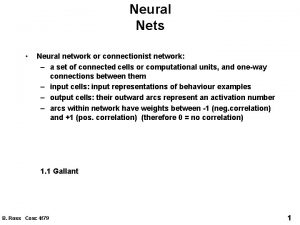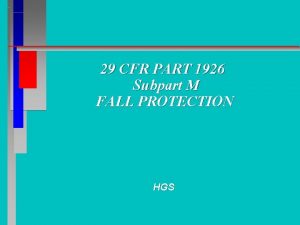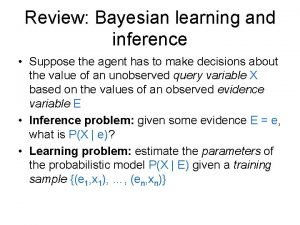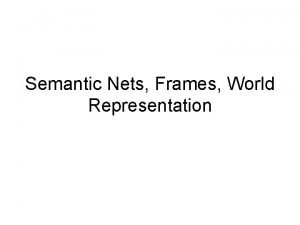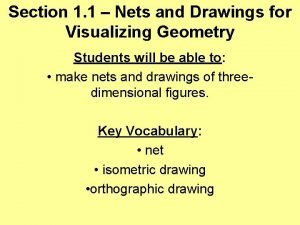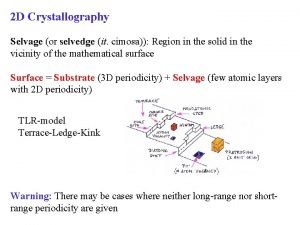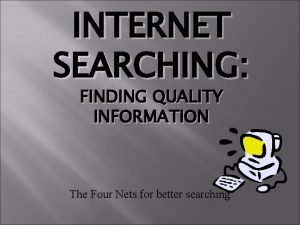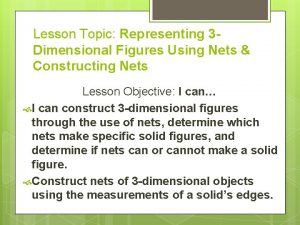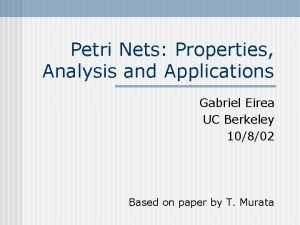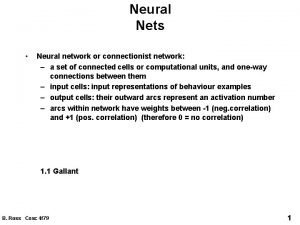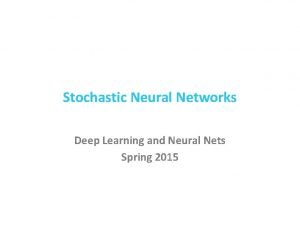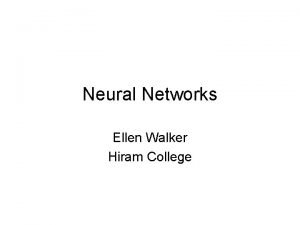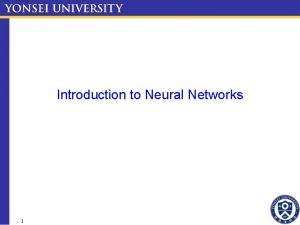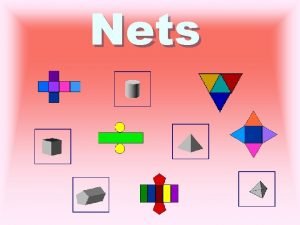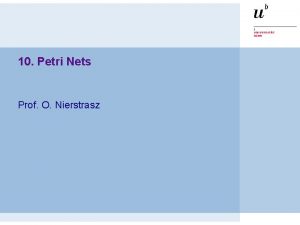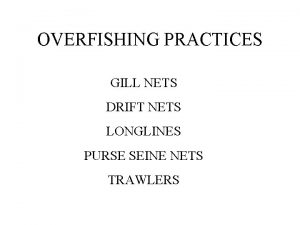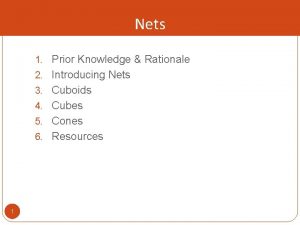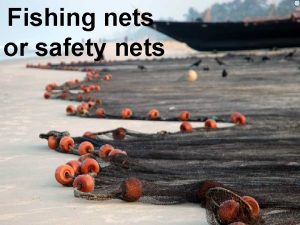Neural Nets Neural network or connectionist network a











- Slides: 11

Neural Nets • Neural network or connectionist network: – a set of connected cells or computational units, and one-way connections between them – input cells: input representations of behaviour examples – output cells: their outward arcs represent an activation number – arcs within network have weights between -1 (neg. correlation) and +1 (pos. correlation) (therefore 0 = no correlation) 1. 1 Gallant B. Ross Cosc 4 f 79 1

Neural nets • • a network topology is first decided upon different network topologies have different reactive behaviours towards input, as well as differing efficiency 1. 4, 1. 5 Gallant B. Ross Cosc 4 f 79 2

Neural nets • • Then the network is “trained” with respect to a set of training examples. Main learning strategies: – supervised: a human teacher reinforces correct performance – unsupervised: patterns are discovered (clustering) – real-time learning: learning occurs during use 1. 2 Gallant B. Ross Cosc 4 f 79 3

Neural nets • • • so long as the input examples can be labelled or numbered wrt input cells, and activation number can be mapped to discernable behaviours of those examples, the network can be used to learn – ie. discover patterns of examples that result in desired output neural networks can have noise filtering rules (unlike rule-based approaches) formula are used to map connection weights into cells, to output activation weight of the cell 1. 6 B. Ross Cosc 4 f 79 4

Neural nets & Expert Systems • • • neural nets have been increasingly successful in developing expert systems – a 1991 conference : vision system to sort apples; medicine; handwriting recognition; commodity training; . . . mid 80’s example: MACIE - MAtric Controlled Inference Engine input( for a small subset of system) : (i) symptoms: (6 total) info about whether present, absent, or unknown (1, -1, 0) (ii) diseases: (2 total) present, absent, unknown (iii) treatments: (3 given) 14. 5 Gallant B. Ross Cosc 4 f 79 5

MACI E 14. 4 Gallant B. Ross Cosc 4 f 79 6

MACI E • Training input file: 14. 6, 14. 9, 14. 10 Gallant B. Ross Cosc 4 f 79 7

Neural nets: comments • techniques exist for extracing IF-THEN rules from network – required for explanation – many possible rules exist in net; the ones of interest are : (i) those that are valid for all values the other variables take IF u 3 is true & u 5 is false THEN conclude u 8 is true (ii) maximally general B. Ross IF u 3 is true & u 5 is false & u 7 is false THEN conclude u 8 is true Cosc 4 f 79 : less general than rule (i), therefore not used 8

Neural nets: comments • neural nets can be thought of as automatons that automatically set certainty values • differ from rule-based approaches: knowledge is not structured – however, it can be argued that experts do not necessarily think in a structured fashion • also, noise can be absorbed – whereas rule-based systems will crash given a noisy (bad) rule • neural nets very good for expertise that uses sophisticated pattern -matching, – eg. image analysis, identification, . . . B. Ross Cosc 4 f 79 9

Comparing NN with Rule-based KBS • History – NN and rule-based systems developed at the same time in 50’s 60’s – NN fell out of favour in late 60’s due to Marvin Minsky’s examples of weaknesses with NN’s (inability of Perceptron to recognize XOR) – rule-based systems were focus of AI for next decade, until NN developed interest in late 70’s: RBS systems didn’t deliver high promises • similarities: – can encode high-level knowledge – can generalize, learn – both are Turing powerful: can simulate each other abstractly • differences: – NN are low-level, bottom-up, data-driven systems; RBS are topdown, rule-driven systems – NN are highly parallel; RBS are sequential (inference is seq’l) – NN automatically account for uncertainty, noise; more difficult B. Ross Cosc 4 f 79 with RBS 10

• • • NN better for: – pattern recognition: visual, audio – when fast training required – when very noisy data set Rule-based systems better for: – systems whose conceptual organization is structured Which is better? – ill-phrased question, as both are suitable to different problems – many are working on incorporating them together into single systems B. Ross Cosc 4 f 79 11
 Connectionist network
Connectionist network Ctc connectionist temporal classification
Ctc connectionist temporal classification Safety nets must be drop tested
Safety nets must be drop tested Nets church planting
Nets church planting Better convenience
Better convenience Bayes nets
Bayes nets Semantic nets and frames
Semantic nets and frames 1-1 practice nets and drawings for visualizing geometry
1-1 practice nets and drawings for visualizing geometry Bravais nets
Bravais nets List the 4 nets for better internet searching.
List the 4 nets for better internet searching. Represent solid figures using nets
Represent solid figures using nets Petri nets properties analysis and applications
Petri nets properties analysis and applications
